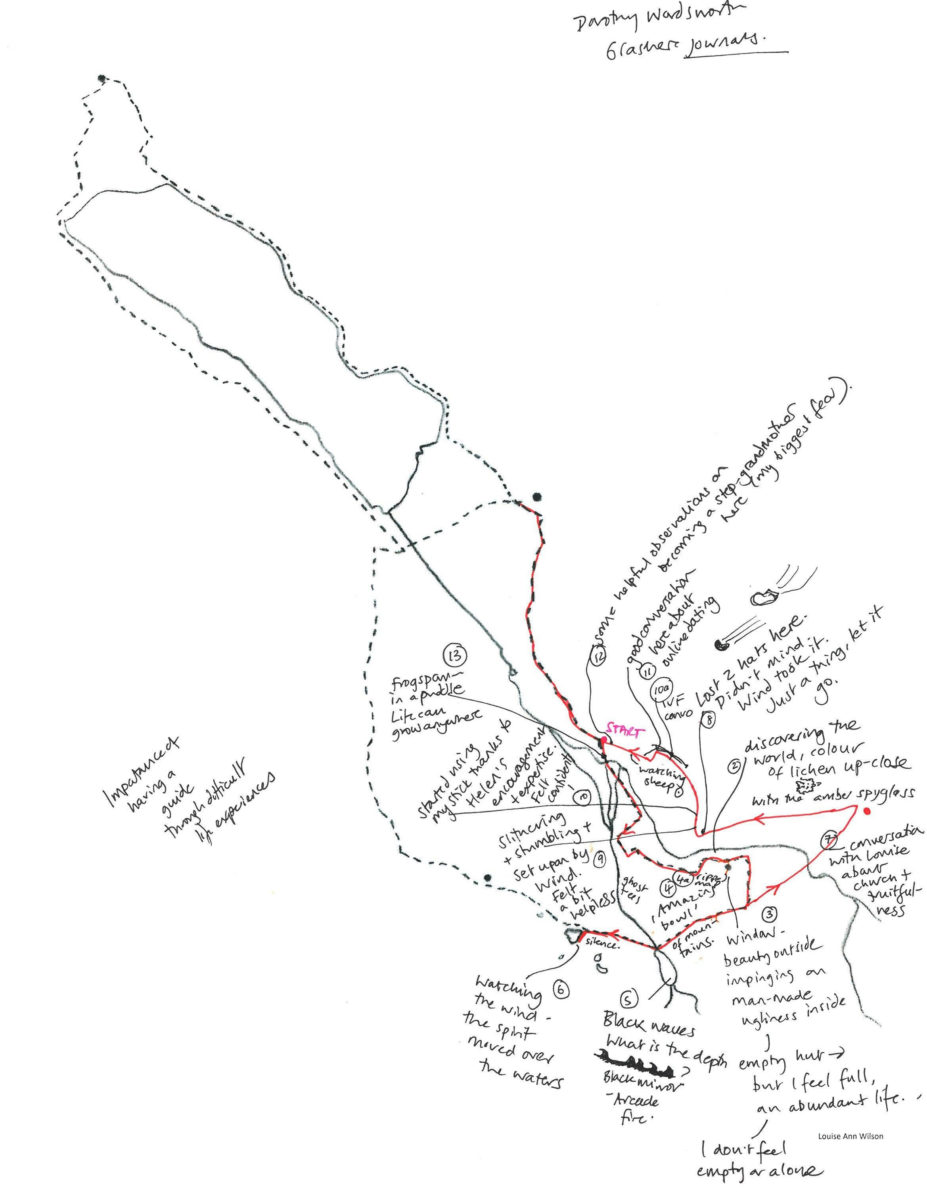Louise Ann Wilson
Louise Ann Wilson is an artist, scenographer and researcher who creates site-specific walking-performances in rural landscapes that give-voice to the void of ‘missing’ or marginal life-events – with transformative and therapeutic outcomes. Her work has addressed terminal illness, bereavement, in/fertility and involuntary childlessness, the effects of aging and the impact of change.
Each project is cross-disciplinary and developed in close collaboration with people with lay and local knowledge of the chosen landscape, scientists and experts in the field of the life-event in question and those experiencing it. These have included: geologists, botanists and shepherds; neurologists, embryologists and palliative care nurses; women experiencing involuntary childlessness, care-home residents and people no longer able to walk a longed for landscape.
Her methodology is underpinned by seven ‘scenographic’ principles that are inspired by Dorothy Wordsworth and her female contemporaries’ approach to walking and landscape and theoretical concepts relating to the feminine ‘material’ sublime and therapeutic landscapes.
In 2017 Louise was awarded a Ph.D. in Theatre Studies from Lancaster Institute of the Contemporary Arts, Lancaster University.

Featured Work
WOMEN’S WALKS TO REMEMBER: ‘WITH MEMORY I WAS THERE’ AND DOROTHY’S ROOM
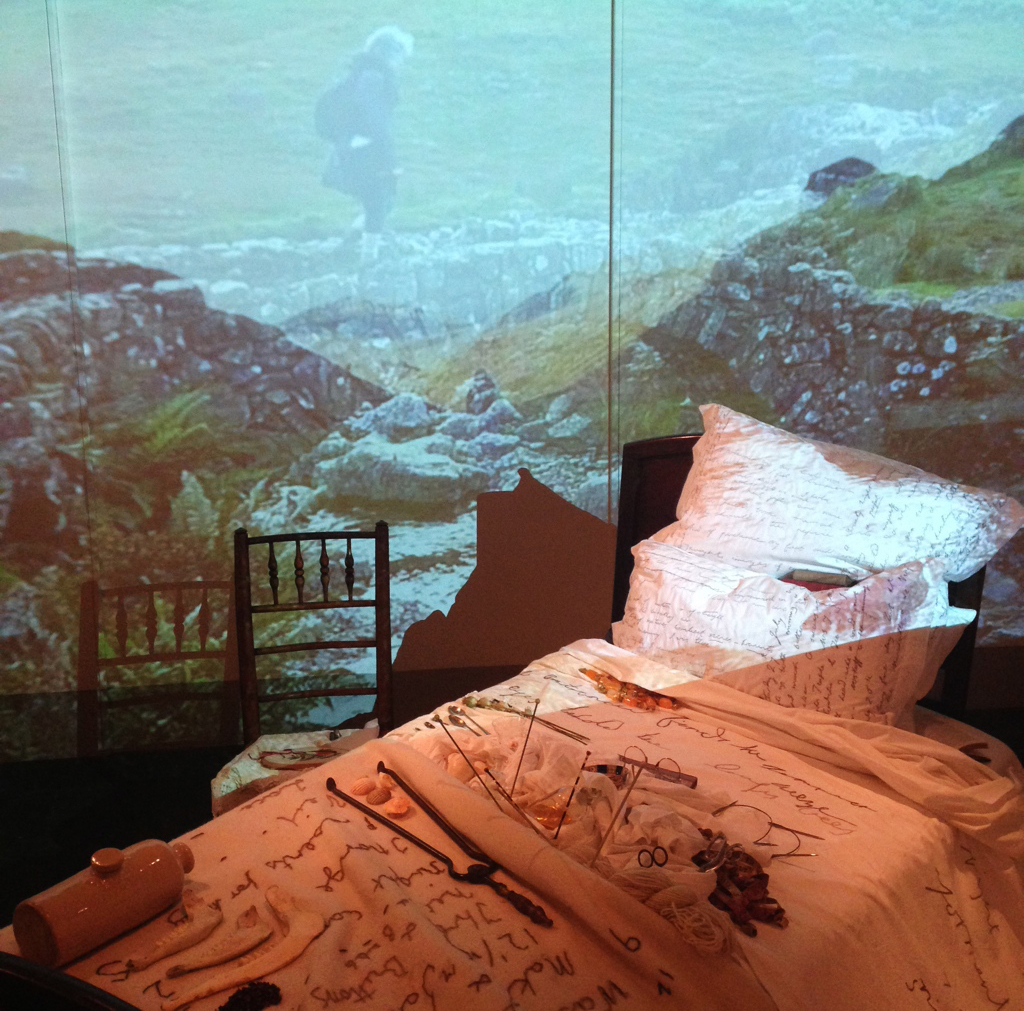
Women’s Walks to Remember: ‘With Memory I was there’ and Dorothy’s Room celebrates Dorothy Wordsworth’s walking legacy the walking-lives of present-day Lake District women by collecting significant walks that can no longer be walked but are vividly remembered and longed for.
Dorothy’s Roomis an immersive installation originally created in Dorothy Wordsworth’s bedroom at Rydal Mount in which she was bed-bound, due to physical ailments and dementia, and explores how she used memory to re-enter the landscape she had once walked. Dorothy’s multi-sensory remembering was therapeutic, enablinga healing process that brought joy and calm and kept her from the ‘wilderness of her mind’. Centred around a bed, in the installation objects mentioned in her Rydal Journalsnest amid twisted and disordered bed linen that are hand-stitched with extracts of the later entries including a working-draft of her poem Thoughts from my Sick Bed: ‘No need of motion, or of strength, Or even the breathing air; — I thought of Nature’s loveliest scenes; And with memory I was there.’A film, layered and edited to create an almost dream-like experience, brings the landscapes she longed for into the room.
Women’s Walks to Remember: ‘With memory I was there’ re-walks significant Lake District walks that present-day women are no longer able to walk them. To create the work Louise invited each participant to draw a memory-map of a longed for walk, which, acting as a substitute or surrogate-walker, she then used to follow in their footsteps before returning with treasures – photographs, films, sounds, words, poetry, drawings and objects– to share with each woman. These materials were then distilled into a series ofmulti-layeredguides that others can use.
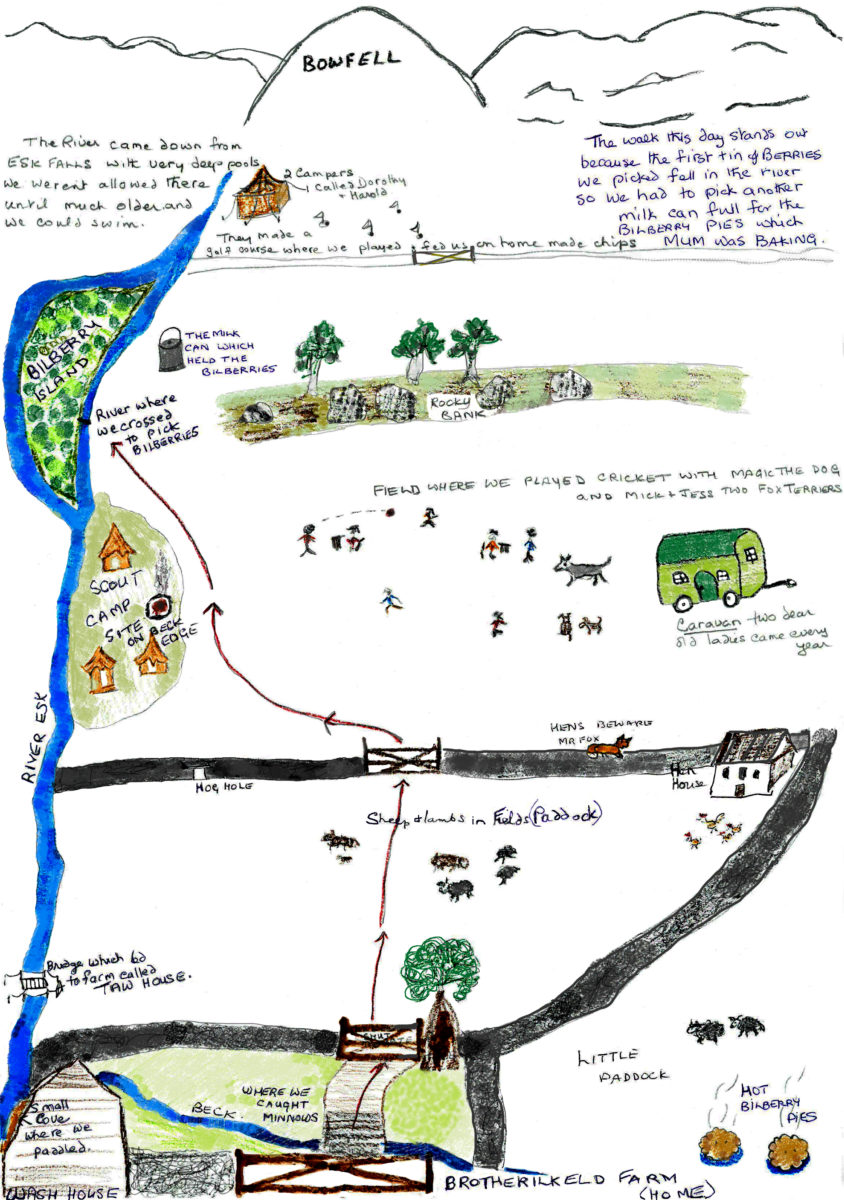
PRODUCTION CREDITS
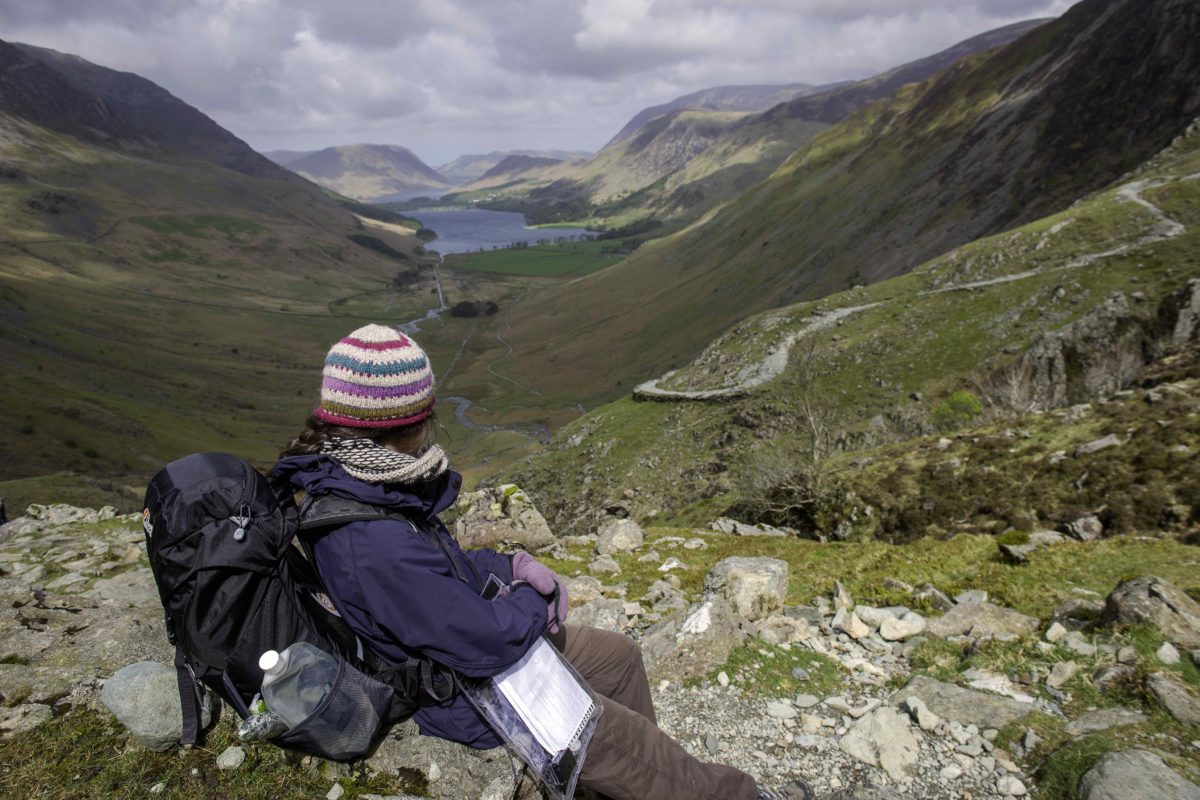
Featured Work
Warnscale: A Land Mark Walk Reflecting on In/Fertility and Childlessness
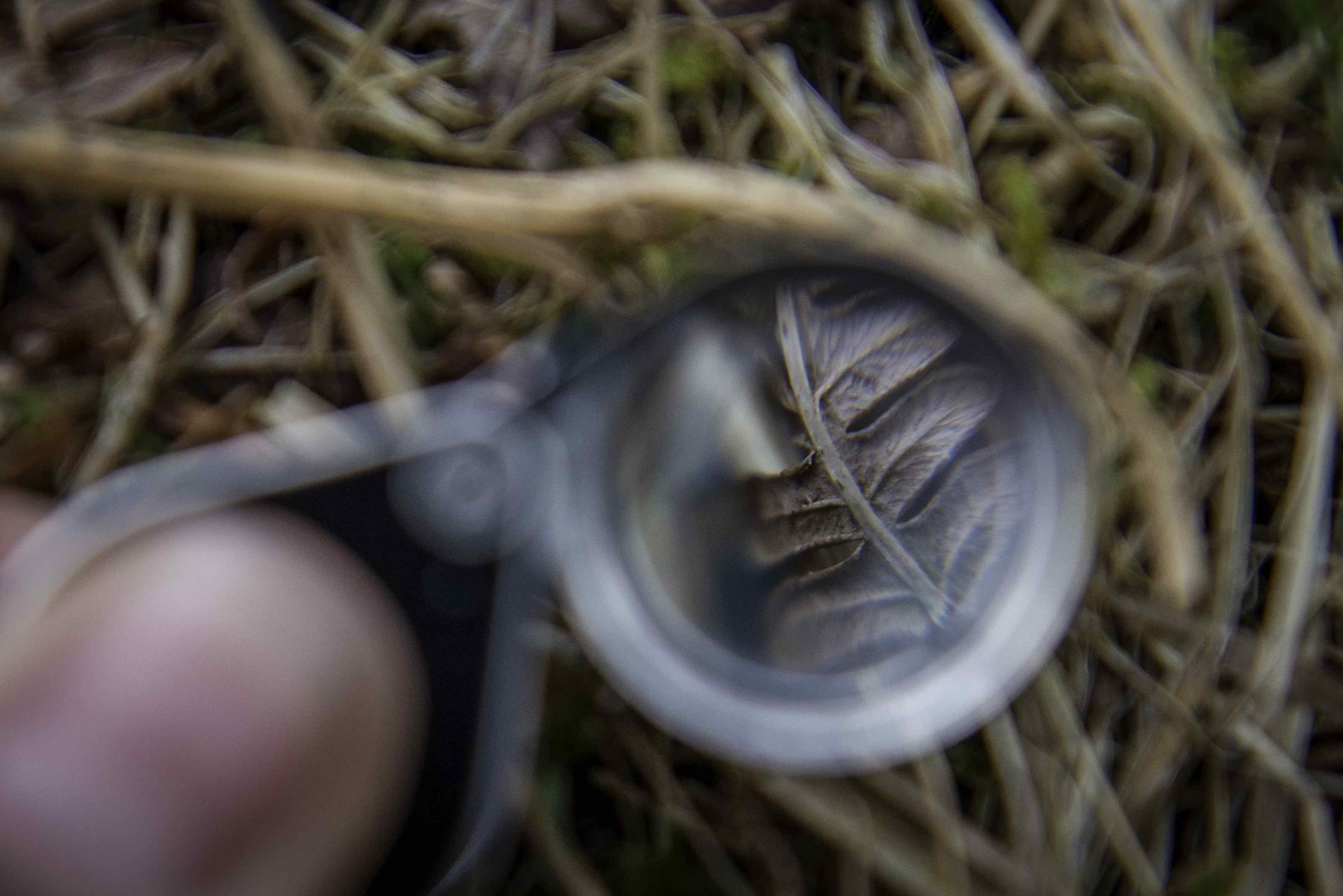
Warnscale: A Land Mark Walk Reflecting on In/Fertility and Childlessness is a self-guided walking-performance mediated through a published walking-guide/art-book and aimed at women who are biologically childless-by-circumstance.
Society offers no rituals or rites of passage through which women who have ‘missed’ the life-event of biological motherhood can be acknowledged and can come to terms with that absence. This site-specific walking-performance, however, offers imaginative and creative ways through which women can engage with the landscape and reflect-upon and transform (even in the smallest of ways)their experience of this little-discussed and isolating experience. The book, through Warnscale is mediated, provides a multi-layered yet non-prescriptive means for participants— whether walking alone, with a partner, friend or in a group — to make and perform their own journey. It does this through the use of emplaced words, images and actions that combine to offer participants ways to acknowledge and express the effects of their experience.
Warnscale was developed through three-tiers of research that involved mapping-walks with women who are involuntarily childless, residencies in fertility clinics and an in-depth study of the landscape.
